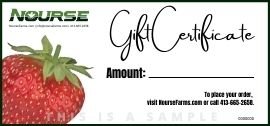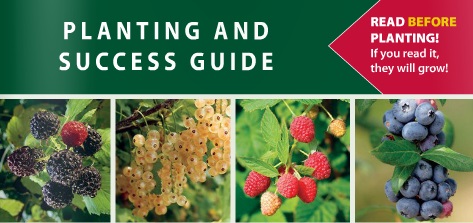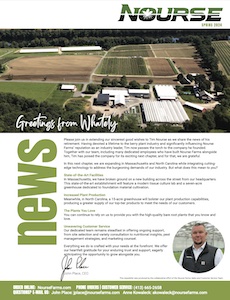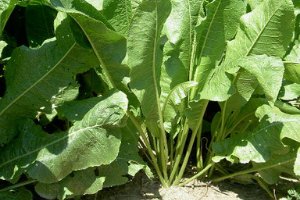What is it?
Horseradish is a root vegetable, which means humans consume the part of the plant that grows underground. A close relative of wasabi, mustard, cabbage, and broccoli, horseradish has a reputation for “packing a punch.” When describing the taste of horseradish, people will often use words like pungent, sharp, spicy, strong, biting, and hot.
On the surface and in your garden or field, you’ll see tall narrow leaves potentially reaching above two feet in height. Under the ground, there will be cylinder-shaped roots with an off-white to tan skin and white to light tan inside.
Health benefits
Horseradish is packed with nutrients associated with boosting immunity: Vitamin C, Zinc, Folates, Magnesium, Potassium, and Calcium. Studies have shown that horseradish has antibacterial properties. And, as anyone who has consumed it can attest to, a good whiff of horseradish is known to help improve congestion symptoms from colds and allergies.
Grow your own
Here at Nourse Farms, we love having horseradish in our catalog. A vigorous grower, horseradish can flourish in almost any garden setting and nearly any well-draining soil. Once horseradish is established, even if it gets a bit neglected, it will likely continue to grow well. So much so that they can take over, so be careful not to plant too close to your favorite flowers!
At-A-Glance
- Recommended Soil pH: 6.2–6.7
- Recommended In-Row Spacing: 10”–12”
- Recommended Between Row Spacing: 3’
- Recommended Zones: 3–8
Planting
Give this hardy perennial plenty of space in your garden bed, as it spreads readily. Plant horseradish in a well-prepared, well-draining, and weed-free bed. Loam or sandy loam soil is the best for development of large, deep roots. If you have rocky soil, you may want to check the soil in the desired planting area and remove large rocks prior to planting. Heavier soil may impede root development, impacting the harvest.
A little well-aged compost is always a good addition whether your soil is sandy, loamy, or clayish. Since you want to encourage a larger and deeply growing taproot in horseradish, mix compost several inches into the soil. If your soil is more dense or clayish, you should build a raised bed, so you have better drainage and greater control over soil moisture. Excess moisture in the soil can cause lots of problems. (See Irrigation below and our blog post about soil and amendments.)
One end of the root is cut flat to indicate it is the top, and the other end is cut on an angle to indicate it is the bottom or distal end. Each year, when you harvest, use this method to cut small lateral roots so you can tell clearly top from bottom for replanting.
Set the root segment at a 45-degree angle in the soil with the flat (larger) end up and the slanted end down, parallel with the soil surface. The flat end should be 1”–2” below the soil surface. Five to 10 plants are usually sufficient for a home garden. Note: The size and diameter of the horseradish root does not determine the ultimate size of the plant.
Horseradish may be grown in large containers that allow large roots to develop. Make sure the container has excellent drainage! Use a potting mix that has been supplemented with compost rather than topsoil or plain compost. Pay close attention to soil moisture so that plants aren’t ever staying too wet or too dry.
It’s good practice to remove lower leaves that turn brown during the season.
Irrigation
Keep soil moist throughout the establishment period. Irrigate through the growing season but take care not to overwater. Many factors, not limited to weather conditions and soil type, determine how often plants should be irrigated. Too much moisture in the soil can make your horseradish soft, increase the risk of root rot, and fungus development in the soil. Horseradish can survive drier periods, but the roots can become woody, and flavor can be much less desirable with increasing stress and drought.
Fertilization
Horseradish does not need a lot of fertilization. You will want to fertilize in spring with five pounds of 10-10-10 per 100 square feet.
Weed Control and Mulching
We recommend regular, manual weeding of your horseradish plants. Consult a local extension before using chemical products. Hoeing around horseradish plants is helpful early in the season or while plants are small, but as they grow taller and wider, it will be more difficult for many weeds to grow nearby. You could use straw or even a layer of compost for mulching.
Harvesting
It is best if you don’t harvest your horseradish in the first year to allow the plans to get well established. In subsequent years, you may harvest horseradish roots anytime from midsummer on, but for the best flavor, wait until after a few to several frosts have occurred and the leaves have died back. This improves flavor!
Dig 10”–12” around and under the plant using a fork or loosen the soil very well around the whole root system so that you leave fewer pieces of root behind. This is particularly important as any root left in the soil will try to regrow and can become a weed. (Note: it is very likely that pieces may be left behind.) Lift the root system out of the ground and take off the side shoots. Pay attention to the top-most, wider part and the bottom, for replanting. It may help to cut the top flat or straight and the bottom on an angle for clarity at planting time.

Dig or loosen the soil around the roots and pull them out of the soil. Take the large, main root and as much of the secondary root system as possible. Wash and dry the roots. Use the largest pieces for your recipe. Smaller, side roots that are ¾” in diameter and about 8” or longer can be replanted in a new bed. They will provide your next year’s crop. If not harvested, the roots will need to be divided every year or two. When replanting smaller pieces of harvested root, be sure to replant into a new bed to reduce pest and disease pressure.
Pests
There are some pests (such as flea beetles, false cinch bugs, caterpillars) that can cause damage to foliage, but a little mild damage to the foliage is not typically of great concern because focus is on root development. Insects, and root rot that cause damage below ground are certainly of greater concern. Crop rotation can help with some of these issues as well as planting in well-drained soil or employing raised beds.
Preparation
Over a relatively short period, once horseradish has been processed, it will lose flavor and the color will change. You can process a little at a time and keep a few pieces in the refrigerator for up to three months for later processing. Store in plastic bags with small slits for a little ventilation.
Recipe
(Adapted from a University of Illinois Extension Bulletin)
Wash the roots, cut off soft or problem spots, peel, and dice horseradish roots. Place them in a grinder or blender with a small amount of water and a couple of ice cubes. Cover tightly and grind until desired consistency is reached. Vinegar or lemon juice stops the enzyme process that gives horseradish its bite. Add immediately for a mild sauce; wait up to three minutes for a hot sauce. Add 2–3 tablespoons of vinegar or lemon juice and ½ teaspoon of salt per cup of horseradish sauce. Store in a covered glass jar in the refrigerator or the freezer.
You can also add grated horseradish root to yogurt, mayonnaise, sour cream, cream cheese, salad dressings, BBQ sauce, mustard, etc., to make dips, spreads, and marinades.
Note: Peeling, cutting and other means of processing the roots can be very irritating to your eyes and nose, and for some, can cause breathing difficulty. Process your roots in a well-ventilated area. If using a food processor or blender, take care when opening the lid. To keep it from spoiling quickly, and to preserve flavor and color after grinding, store in the refrigerator for no more than a few weeks.




